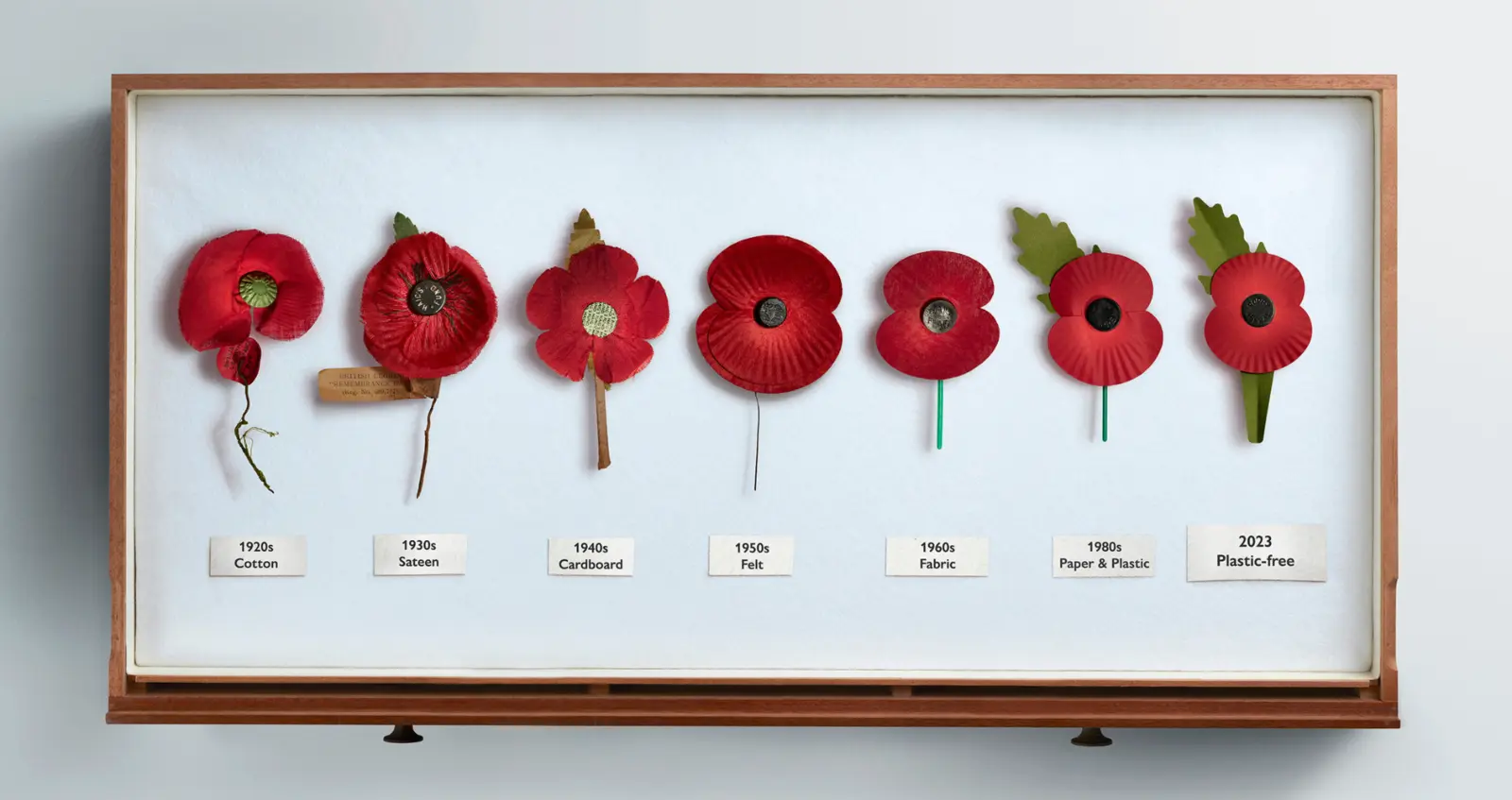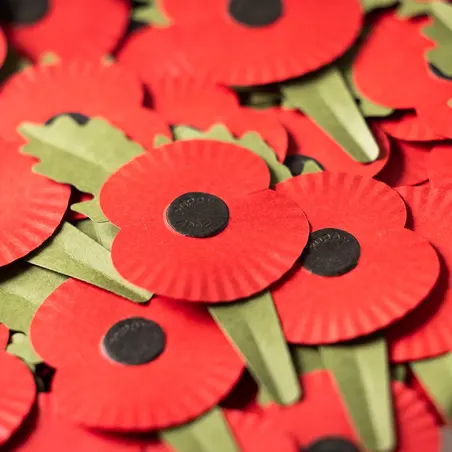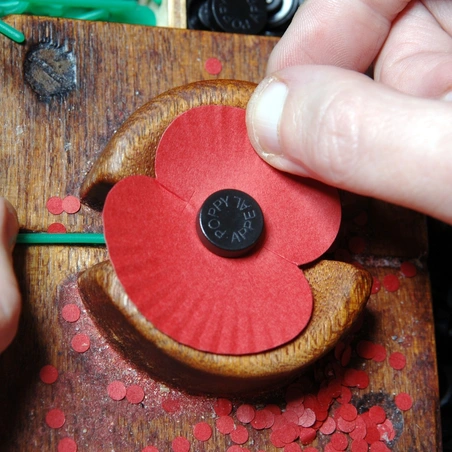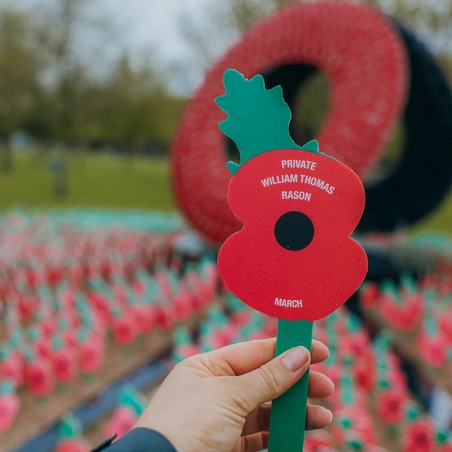How the Royal British Legion’s poppy has evolved over more than 100 years of Remembrance.
Since emerging as a symbol of Remembrance after the First World War, poppies worn during the Poppy Appeal have come in a range of shapes and sizes.
From handmade silk and cotton poppies to the new plastic-free poppy made entirely from paper, discover how the poppy has evolved over the last century.
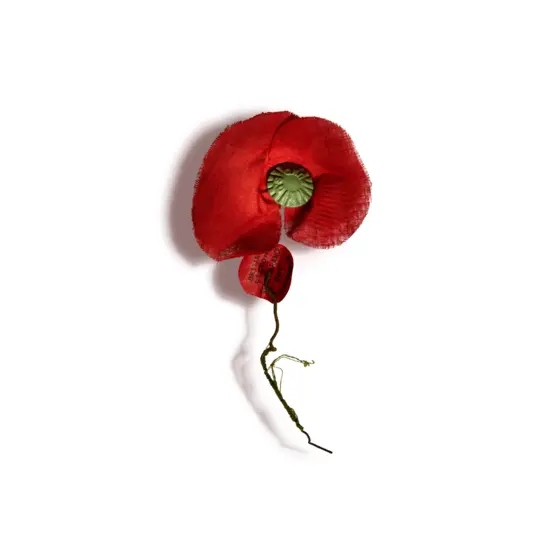
The first poppies
The first poppies used silk for the petals, wire for the stem, and bitumen – a semi-hard petroleum - for the centre.
There were four different poppies designed to suit different budgets, from a large poppy made from silk, a smaller one, one made from lawn or cotton and a cardboard poppy for children.
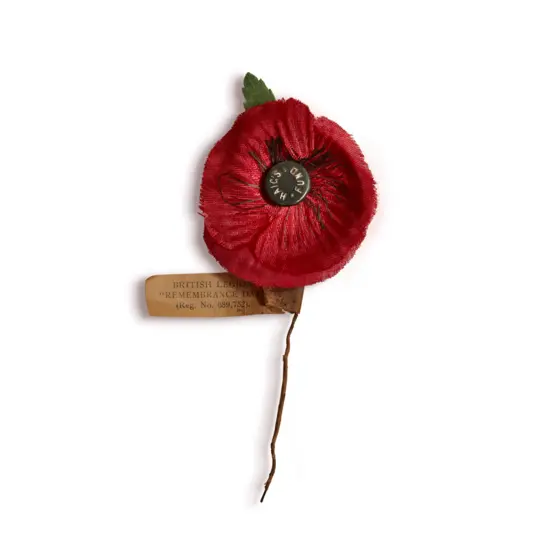
Silk and lawn cloth design evolves
In the 1930s poppies made from two layers of different fabric were introduced. The under layer was made from lawn cloth, with an upper layer of silk. There was also a green fabric leaf, faux stamens and a metal centre.
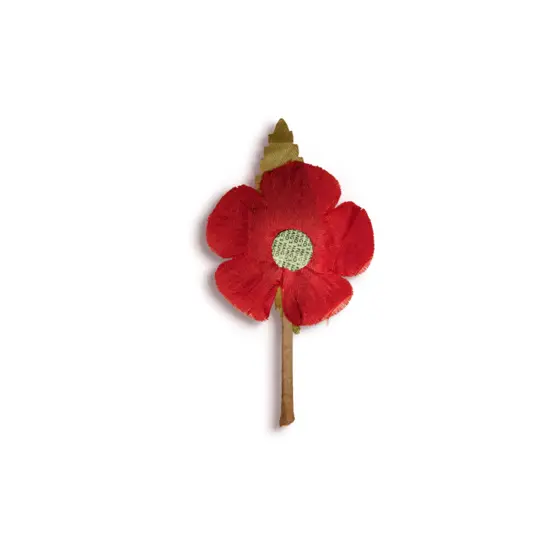
Wartime poppies
During the Second World War, shortages in materials meant the number of designs dropped from four to two. Silk poppies were made in much smaller numbers, and a second poppy made entirely from card was introduced.
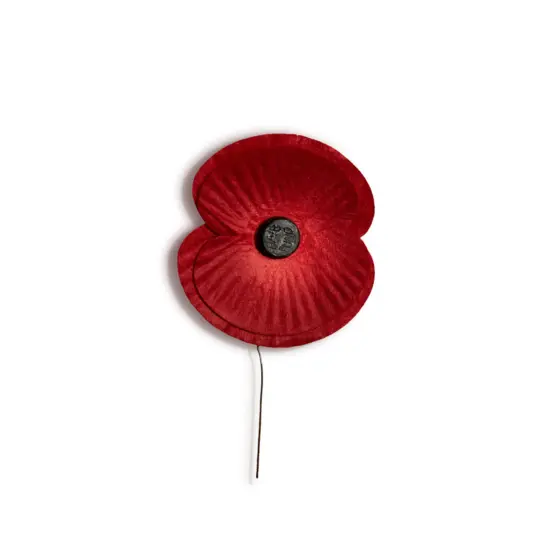
Wire stem returns
Wire stems were reintroduced in the 1950s to replace the cardboard used as a result of wartime shortages, with red felt used to create the poppy petals.
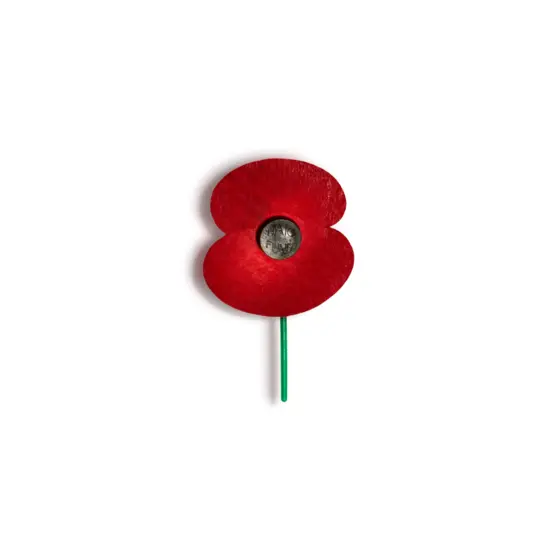
A new look
A new look design emerged in 1967 with bitumen centre and wire stem replaced by plastic, along with the introduction of a one-piece petal.
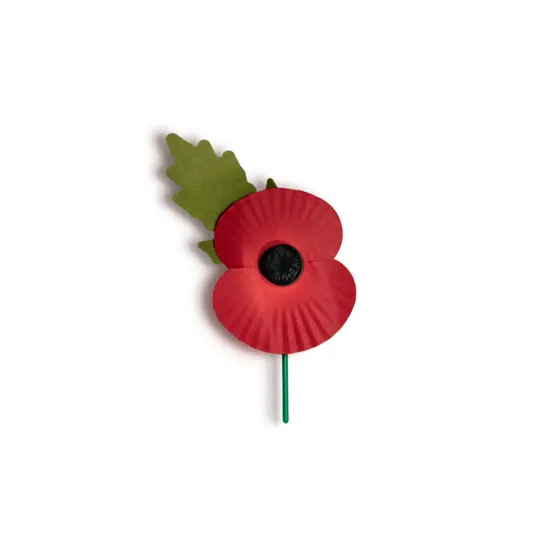
Green leaf returns
In 1987 the poppy regained its leaf after it emerged that the public preferred the feature.
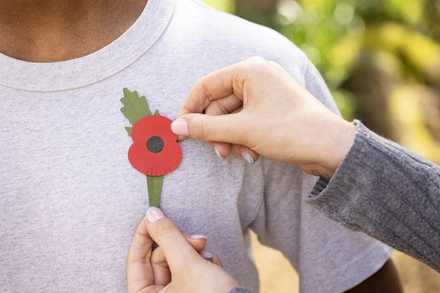
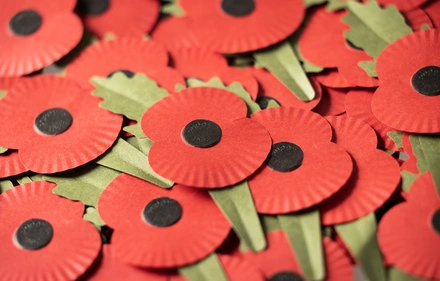

The new plastic-free poppy
2023 sees the biggest change in the poppy’s design for a generation.
After more than three years in development, the Royal British Legion has produced a plastic-free poppy, made entirely from paper that is completely recyclable at home.
With paper created from renewable fibres from renewable sources including offcuts from coffee cups, the innovative new poppy design features a traditional poppy shape, with a black centre embossed with ‘Poppy Appeal’, and a leaf with a crease.
It can be fastened with a pin in the stem or worn in a buttonhole.

